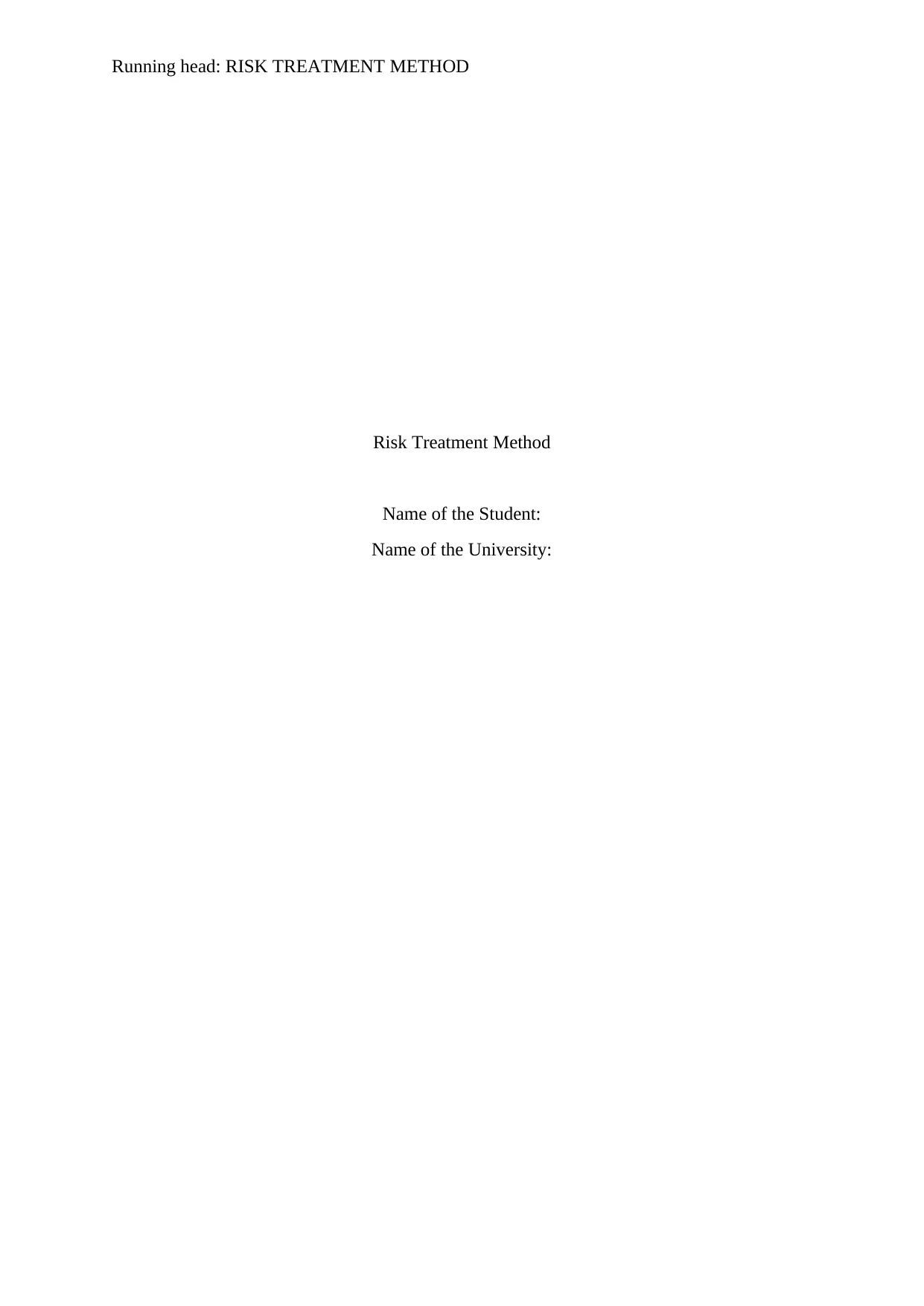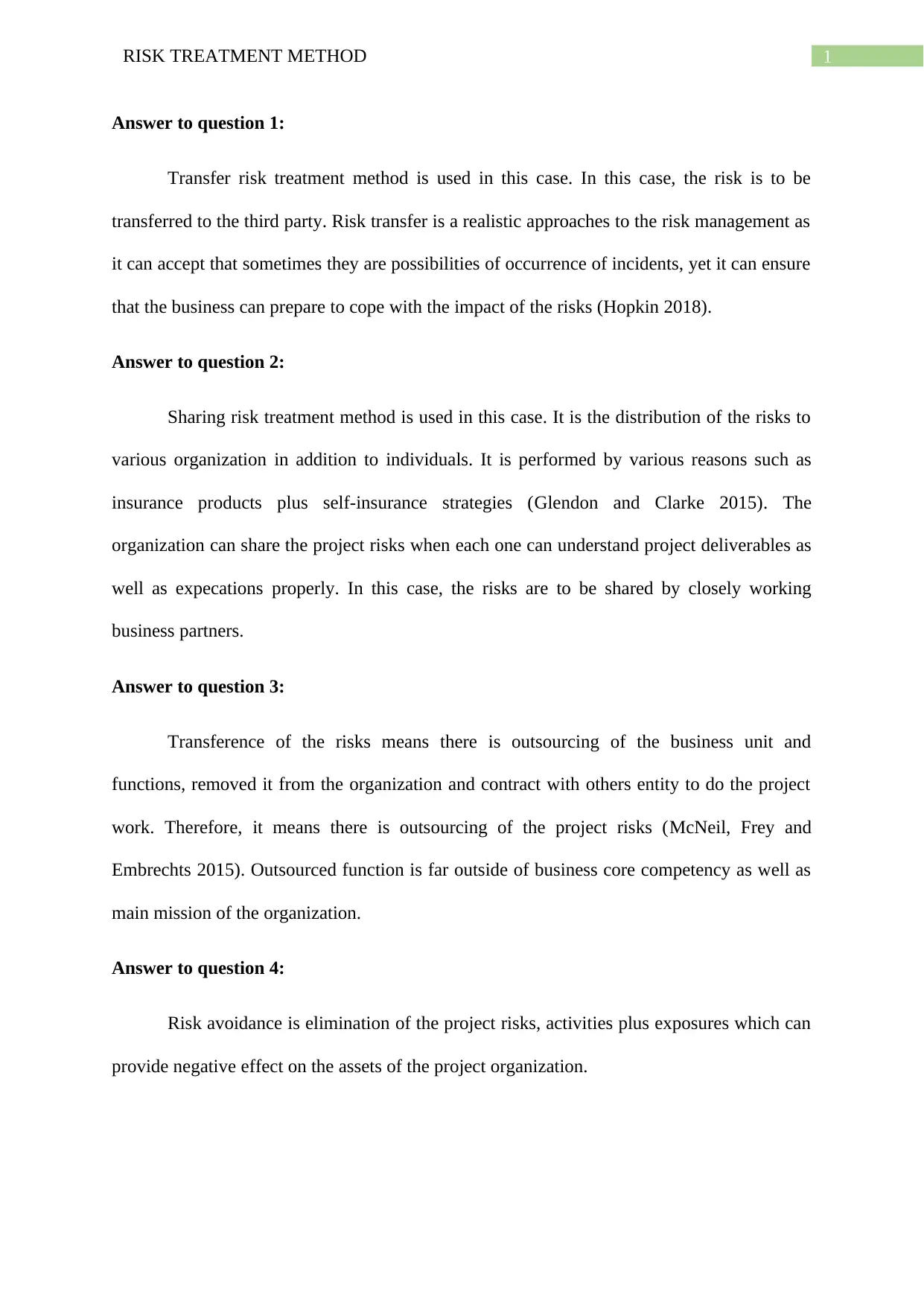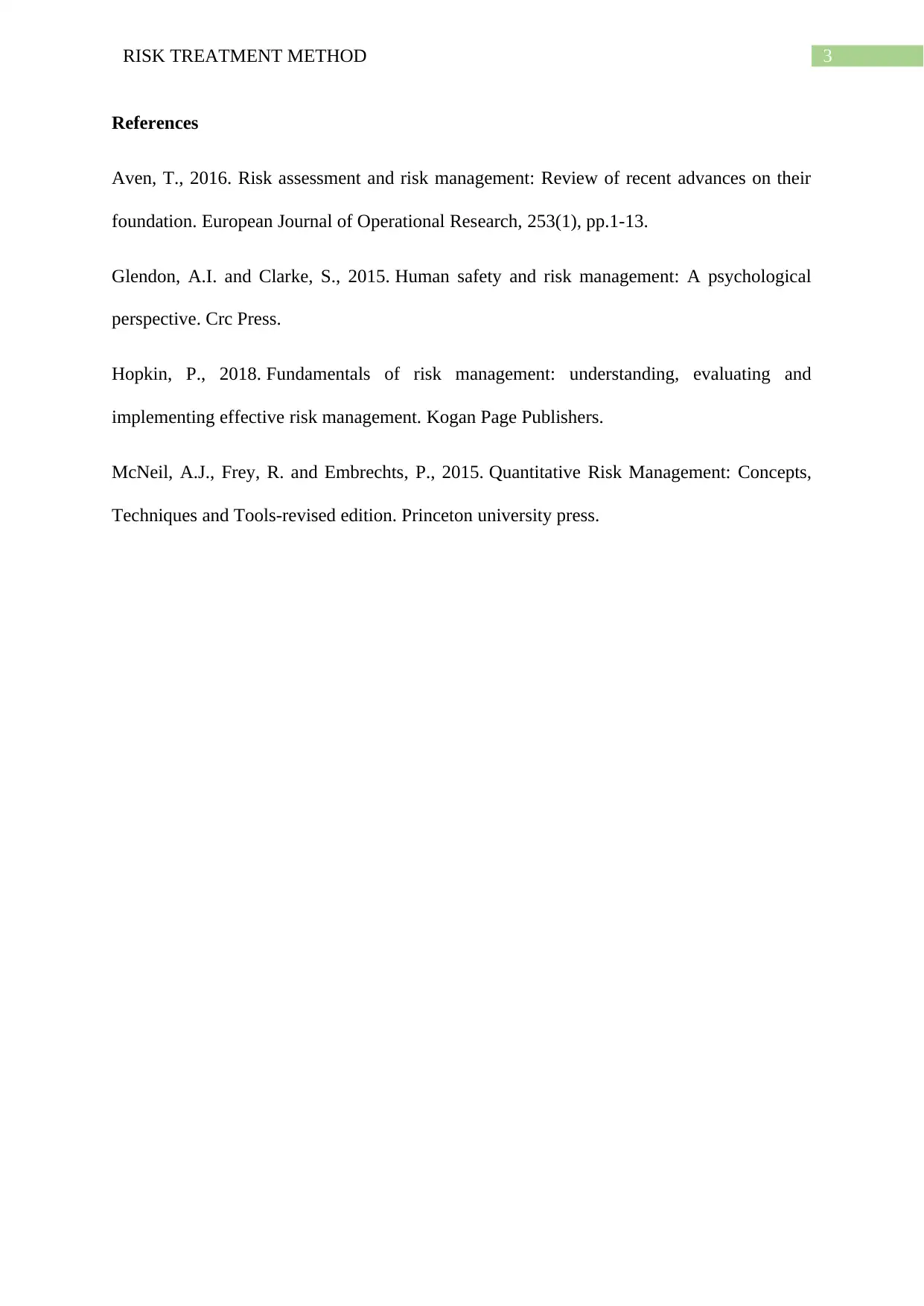Risk Treatment Methods Assignment: Analysis, Solutions, and Examples
VerifiedAdded on 2023/02/01
|4
|446
|45
Homework Assignment
AI Summary
This assignment analyzes various risk treatment methods within the context of project management. It addresses four key methods: risk transfer, risk sharing, risk avoidance, and risk acceptance. The solution provides definitions and examples for each method, illustrating how they can be applied in different scenarios. Risk transfer involves shifting the risk to a third party, risk sharing distributes risks among multiple entities, risk avoidance eliminates the risk entirely, and risk acceptance involves acknowledging the risk and its potential impact. The assignment uses case-specific examples to explain each method, enhancing the understanding of how to effectively manage project risks. The provided references support the analysis and provide a foundation for further exploration of risk management principles. The assignment follows a question-and-answer format, addressing the practical application of the concepts.
1 out of 4











![[object Object]](/_next/static/media/star-bottom.7253800d.svg)